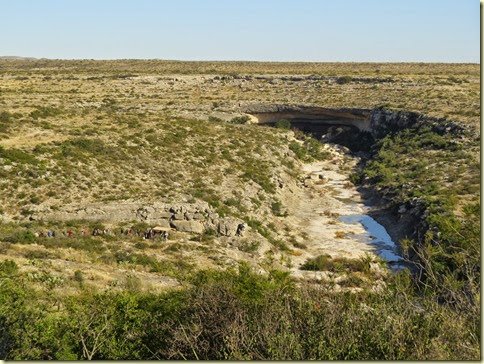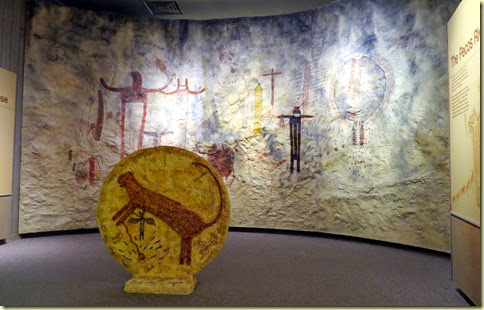
Seminole Canyon gets it’s name from the Black Seminole scouts who fought in the US army during the Texas-Indian wars. The Black Seminole were escaped slaves who had been living in Florida with the Seminole Indian tribes. Both the Seminole and Black Seminole were forced to move to Oklahoma in the 1830s. Many of the Black Seminole went across the border to Mexico to escape becoming enslaved again. In 1870 the Black Seminole were invited back to the US and promised food and provisions, as well as reimbursement for traveling costs if they agreed to join the army. Unfortunately none of the promises were met but decedents of the scouts still live in the area.
The canyon has been a home for people for 12,000 years. Grasslands and forests supported elephants, camels, bison, and horses but by 7,000 years ago the drier climate meant small game hunting and gathering of desert plants. Early people had always used the rock shelters carved by the Rio Grande, Pecos, and Devils Rivers and later inhabitants left their mark by making huge, intricate paintings on the shelter walls which have survived for 4,000 years due to the dry climate.

The park was established in 1980 to protect the canyon and rock shelters. It features a visitor center with a very nice little museum, guided tours of two shelters, trails, picnic areas, and a campground.
The trails are not accessible but the museum has displays of the shelter paintings along with a brief history of the Native Americans, Black Seminoles, ranching and sheep herding. We did not check the campground for accessibility.


The visitor center lot has long RV spaces. Park
29.70037, -101.31347


BEAUTIFUL!
ReplyDelete